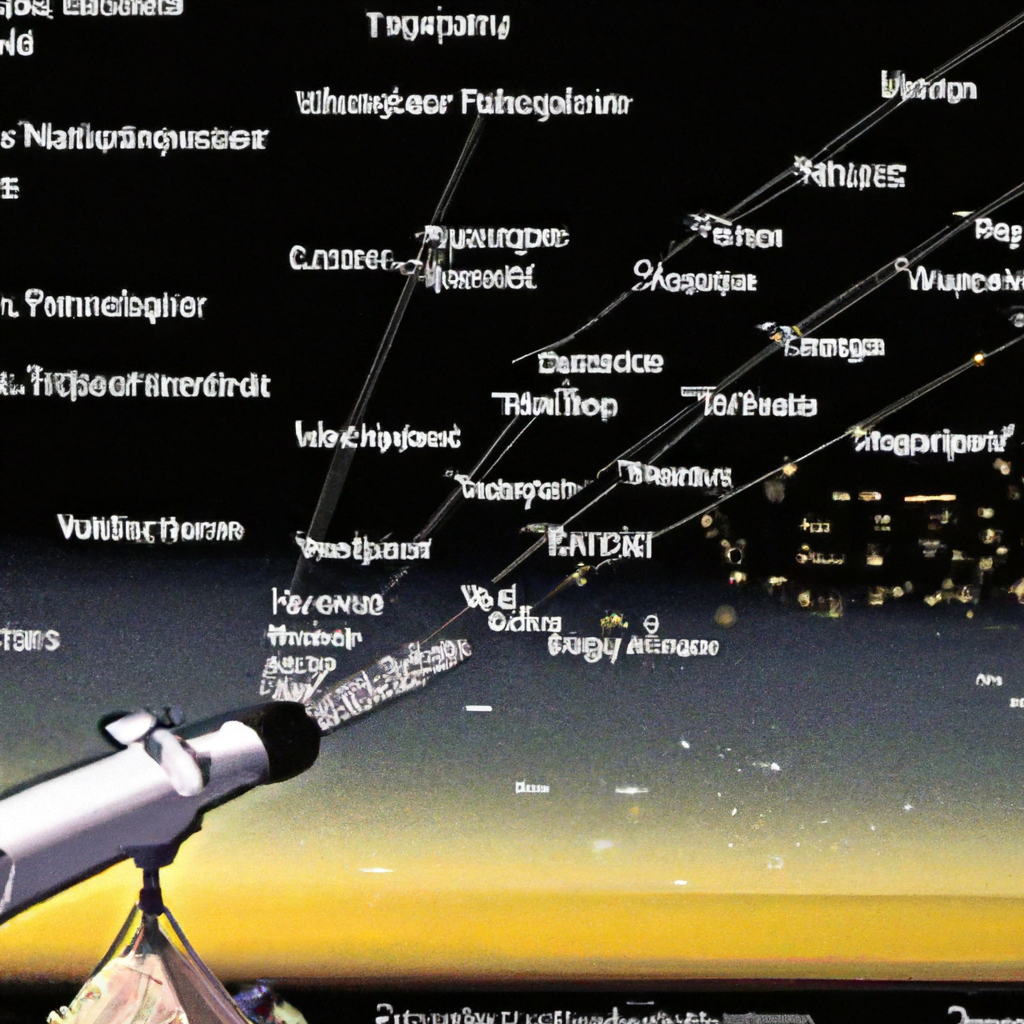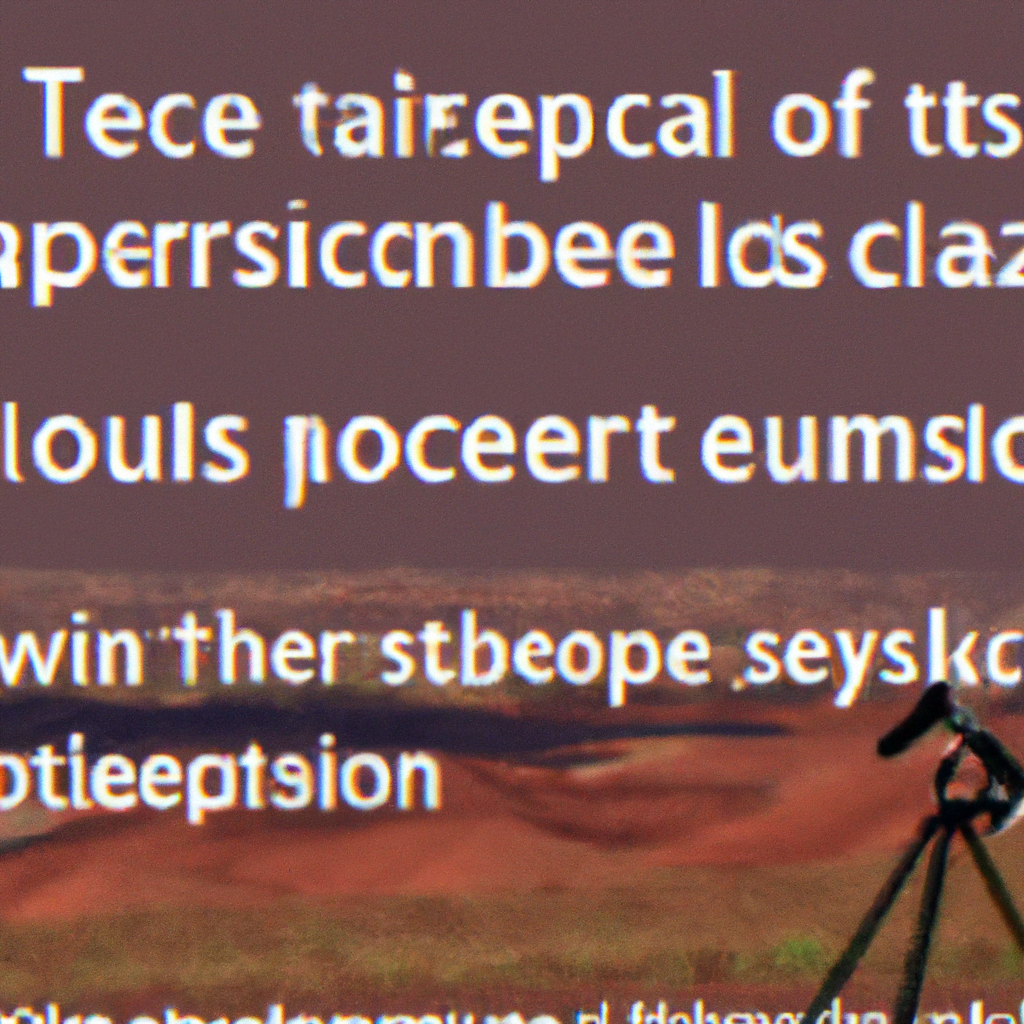Imagine looking up at the night sky, filled with countless stars, galaxies, and celestial wonders that have captivated humanity for centuries. Have you ever wondered how we are able to capture those mesmerizing images and unravel the mysteries of the universe? The answer lies in the intricate mechanisms of a telescope, specifically its focal length. The focal length of a telescope plays a crucial role in determining the clarity, magnification, and overall performance of our views into the vast expanse of space. Let’s explore the pivotal importance of a telescope’s focal length and how it unlocks a window to the wonders of the cosmos.
Table of Contents
Understanding the Basics of Focal Length
Definition of focal length
Focal length is a fundamental concept in optics that refers to the distance between the lens (or mirror) of a telescope and the point where incoming parallel rays of light converge to form a focused image. In simple terms, focal length determines the magnifying power and field of view of a telescope. It is usually measured in millimeters (mm).
Significance of focal length in telescope design
Focal length plays a crucial role in telescope design as it affects the performance and capabilities of the instrument. A longer focal length leads to higher magnification and narrower field of view, making it suitable for observing small and distant objects with greater detail. Conversely, a shorter focal length provides wider field of view but lower magnification, making it ideal for observing large celestial objects or capturing wide-angle views of the night sky.
Relationship between focal length and optical performance
The relationship between focal length and optical performance is multifaceted. Longer focal lengths tend to result in higher image resolution and clarity, allowing astronomers to observe fine details of celestial objects. However, longer focal lengths also amplify optical aberrations such as chromatic aberration and spherical aberration, which can degrade image quality. On the other hand, shorter focal lengths minimize these aberrations but may introduce other distortions or image imperfections.
Optical Design and Focal Length
Types of telescopes based on focal length
Telescopes can be broadly classified into three categories based on their focal length: refracting telescopes, reflecting telescopes, and catadioptric telescopes. Refracting telescopes use lenses to gather and focus light, reflecting telescopes use mirrors, and catadioptric telescopes combine both lenses and mirrors in their optical systems. Each type of telescope has its own advantages and disadvantages in terms of focal length, making them suitable for different observational requirements.
Factors influencing the choice of focal length in telescopes
When selecting a telescope, several factors come into play when considering the focal length. The specific interests and observational goals of the astronomer, as well as the expected viewing conditions and targets, all contribute to the choice of focal length. Additionally, factors such as budget, portability, and ease of use may also impact the decision-making process.
Trade-offs between focal length and other optical parameters
Choosing the right focal length involves balancing various optical parameters. Longer focal lengths generally produce larger magnification, enabling detailed views of distant objects, but they often sacrifice field of view. Shorter focal lengths, on the other hand, provide wider fields of view, making them suitable for capturing expansive celestial vistas, but they sacrifice magnification. Astronomers must consider their specific needs and preferences when evaluating the trade-offs between focal length, magnification, and field of view.

Magnification and Focal Length
Fundamentals of magnification in telescopes
Magnification, often one of the main considerations for aspiring astronomers, refers to the degree to which a telescope enlarges the apparent size of celestial objects. It is determined by the ratio of the telescope’s focal length to the focal length of the eyepiece used. A higher magnification allows for closer inspection of small details, but it may also diminish the brightness of the object being observed.
Magnification formula and its connection to focal length
The formula for calculating the magnification of a telescope is relatively straightforward. It is given by dividing the focal length of the telescope by the focal length of the eyepiece. For example, using a telescope with a 1000mm focal length and an eyepiece with a focal length of 10mm will yield a magnification of 100x. This formula highlights the direct relationship between the telescope’s focal length and the resulting magnification.
Impact of focal length on achievable magnification
The focal length of a telescope directly affects the achievable magnification. Longer focal lengths enable higher magnifications, allowing for the observation of finer details on celestial objects. However, there are limitations to magnification, primarily governed by atmospheric conditions and the size of the telescope’s optics. Excessive magnification can result in a fuzzy or dim image due to the blurring effects of Earth’s atmosphere, so astronomers must find the right balance between focal length and achievable magnification for optimal observations.
Field of View and Focal Length
Definition of field of view in telescopes
The field of view in a telescope refers to the angular extent of the sky visible through the eyepiece. It is the size of the patch of sky that can be observed at a given time. A wider field of view encompasses more sky, enabling the observation of larger celestial objects or facilitating the identification of deep space targets within a specific area.
Relationship between focal length and field of view
Focal length and field of view share an inverse relationship. Telescopes with shorter focal lengths provide wider fields of view because they capture a larger portion of the sky. Conversely, telescopes with longer focal lengths have narrower fields of view, limiting the amount of sky that can be seen at once. Astronomers must consider the desired field of view when choosing a telescope based on its focal length to ensure it aligns with their observational preferences.
Importance of field of view in specific astronomical observations
The importance of field of view varies depending on the intended observations. For wide-field observations such as capturing cosmic landscapes or tracking fast-moving objects like meteors, a wider field of view is essential. On the other hand, certain observations, such as detailed views of planets or small celestial objects, may require a narrower field of view to focus on specific targets. Understanding the relationship between focal length and field of view is crucial in selecting the appropriate telescope for different astronomical applications.

Aperture and Focal Length
Explanation of telescope aperture
Telescope aperture refers to the diameter of its light-gathering objective, either the lens or the primary mirror. It determines the amount of light the telescope can collect and its ability to resolve fine details. A larger aperture allows more light to enter the telescope, resulting in brighter and more detailed images.
Influence of focal length on the size of the telescope’s objective
The focal length of a telescope does not directly influence the size of the objective. However, the relationship between focal length and aperture affects the overall physical dimensions of telescopes. Longer focal lengths often require larger objective diameters to maintain optical performance. However, it is important to note that aperture size primarily determines the light-gathering ability, while focal length governs magnification and field of view.
Implications of aperture and focal length on resolving power
The combination of aperture and focal length influences the resolving power of a telescope, which determines its ability to distinguish fine details in celestial objects. Larger apertures generally result in higher resolving power, allowing astronomers to observe more intricate structures. Longer focal lengths can enhance resolving power when paired with larger apertures, facilitating the observation of smaller and more distant objects with greater clarity.
Collimation and Focal Length
Definition of collimation in telescopes
Collimation refers to the alignment of the optical elements in a telescope to ensure that the light path is properly focused and images are sharp. Proper collimation is crucial for optimal image quality and resolving power. It involves adjusting the alignment of the primary mirror (in reflecting telescopes) or lenses (in refracting telescopes) to maintain precision.
Effect of focal length on collimation adjustments
The focal length of a telescope does not directly impact collimation adjustments. While collimation is necessary for all telescopes, regardless of their focal length, the process remains consistent. Changes in focal length do not require additional or different collimation procedures. However, it is important to note that telescopes with longer focal lengths may exhibit more pronounced optical imperfections, making precise collimation even more crucial to achieve satisfactory image quality.
Importance of proper collimation for optimal image quality
Proper collimation is essential for achieving optimal image quality in telescopes. Misalignment of the optical elements can result in distorted or fuzzy images, reducing the ability to observe fine details. By ensuring accurate collimation, astronomers can maximize the performance of their telescopes, minimize optical aberrations, and enjoy the clearest and sharpest views of celestial objects.

Photography and Focal Length
Introduction to astrophotography
Astrophotography is the art of capturing celestial objects and phenomena through photography. It allows astronomers and enthusiasts to document and share the beauty of the night sky. Focal length plays a crucial role in astrophotography as it determines the field of view, magnification, and image composition.
Relationship between focal length and image composition
In astrophotography, focal length influences the composition of the captured image. Longer focal lengths result in narrower fields of view, allowing for detailed views of smaller objects such as planets or individual stars. Conversely, shorter focal lengths provide wider fields of view, enabling the capture of larger celestial landscapes or constellations.
Choosing the right focal length for different types of astrophotography
The choice of focal length in astrophotography depends on the desired subject and composition. Wide-angle astrophotography, which aims to capture expansive celestial scenes or the Milky Way, benefits from shorter focal lengths. On the other hand, high focal lengths are ideal for planetary imaging or capturing detailed images of smaller deep space objects. Selecting the appropriate focal length is crucial to achieving the desired composition and emphasizing specific aspects of the night sky.
Telescope Mounts and Focal Length
Overview of different telescope mounts
Telescopes are typically mounted on various types of mounts, which provide stability, ease of use, and tracking capabilities. Common telescope mounts include alt-azimuth mounts, equatorial mounts, and computerized mounts. Each mount has its specific advantages and disadvantages in terms of stability, portability, and tracking accuracy.
Considerations for focal length when selecting a mounting system
When selecting a mounting system for a telescope, the focal length is an important factor to consider. Longer focal lengths generally require more stable mounts to compensate for the increased magnification and narrower fields of view. Telescopes with shorter focal lengths may be more forgiving in terms of mount stability but still require a solid and reliable platform to ensure accurate tracking and smooth observation.
Stability requirements for longer focal length telescopes
Longer focal length telescopes inherently require greater stability due to their narrower fields of view and higher magnification. The longer the focal length, the more sensitive the telescope becomes to vibrations and other disturbances. Stability is crucial for capturing sharp and detailed images, especially when dealing with high magnification observations or long-exposure astrophotography. When using longer focal length telescopes, selecting a robust and sturdy mount is essential to minimize vibrations and achieve optimal image quality.

Astronomical Applications of Different Focal Lengths
Low focal length telescopes for wide-field observations
Telescopes with low focal lengths are commonly used for wide-field observations, where the objective is to capture expansive views of the night sky. These telescopes offer wide fields of view, allowing astronomers to take in large areas of the sky or photograph deep space objects such as star clusters and nebulae. The lower magnification offered by these telescopes enhances the sense of depth and scale in astrophotography and visual observations.
Medium focal length telescopes for general observations
Telescopes with medium focal lengths strike a balance between field of view and magnification. They are versatile instruments suitable for a wide range of astronomical observations. With moderate magnification and a reasonable field of view, these telescopes are ideal for observing planets, the Moon, and larger deep space objects. They offer a good balance between detail and context, making them popular choices for both visual observation and astrophotography.
High focal length telescopes for detailed and narrow-field observations
High focal length telescopes are designed for detailed and narrow-field observations. They provide higher magnification, allowing astronomers to observe fine details in planets, lunar terrain, and small deep space objects such as galaxies and planetary nebulae. These telescopes are often favored by dedicated astrophotographers seeking to capture intricate structures and faint details in celestial objects.
Choosing the Right Focal Length for Your Needs
Factors to consider when selecting a telescope focal length
When choosing a telescope focal length, several factors should be considered. Firstly, consider your specific interests and observational goals. Determine whether you are more interested in wide-field views, planetary observation, or deep space imaging. Secondly, assess your observing conditions and the types of objects accessible from your location. Additionally, consider your skill level, budget, and the level of portability you require.
Importance of personal preferences and intended usage
Personal preferences and intended usage play a significant role in selecting the right focal length. Every astronomer has unique preferences and interests, and understanding your specific goals will guide your decision. Some astronomers may prioritize capturing grand vistas of the night sky, while others may be more focused on detailed views of specific objects. By considering personal preferences and intended usage, you can ensure that the chosen focal length aligns with your goals and aspirations.
Balancing portability, versatility, and specific observational goals
Finding the balance between portability, versatility, and specific observational goals is key when selecting a telescope focal length. Consider the portability of the telescope and the ease of setup when planning your observing sessions. Balancing versatility ensures that the chosen focal length caters to a wide range of astronomic observations, providing flexibility throughout your journey as an astronomer. Ultimately, by finding the right compromise between portability, versatility, and desired focal length, you will be better equipped to embark on a fulfilling and rewarding astronomical experience.

